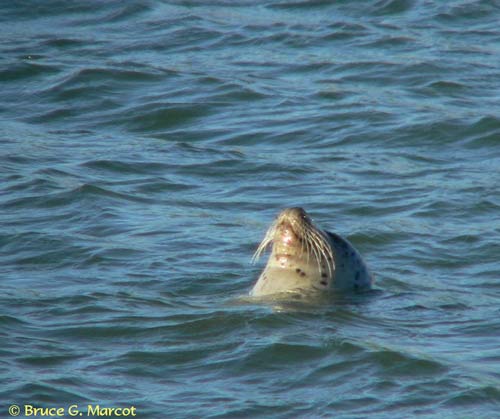Seals' Whiskers Can Track Fish From Hundreds of Feet Away

Blindfolded seals can track passing miniature submarines from 130 feet away by using their extraordinarily sensitive whiskers to follow the wakes the mini-subs leave behind in the water.
Turns out, seals can also use their whiskers to track fish from even farther away, researchers now find.
Past studies with mini-subs and harbor seals (Phoca vitulina) revealed these agile hunters could prove remarkably perceptive. However, since submarine propellers are not all that similar to fish fins, researchers wanted to see how sensitive the seals might be to more lifelike phenomena.
In underwater experiments at the Marine Science Center in Germany with a 6-year-old harbor seal named Henry over the course of two months, scientists blindfolded the seal and trained him to poke his head into a plastic box shortly after they swept a small rubber fin through otherwise still water. They also taught Henry to show which direction he thought the fin had moved by rewarding him with a tasty fish snack every time he was correct.
The researchers next had Henry swim into a pool shortly after a rubber fin had already swept through the water. Five seconds after a fin had swept through he could still successfully identify which direction the fin had moved with more than 90-percent accuracy.
As they gradually increased the length of the delay, meaning the wake was farther away by the time Henry reported his estimate, the scientists were amazed that even after a 35-second delay, Henry was able to tell them which direction the fin had passed with 70 percent accuracy. He only lost the trail after a 40-second delay.
A fish can cover tens and hundreds of yards (meters) in the span of a half-minute, so seal whiskers "compare well with the performance of whales and dolphins," and their sophisticated means of scanning the world with echolocation, said researcher Wolf Hanke, a sensory ecologist at Rostock University in Germany.
Sign up for the Live Science daily newsletter now
Get the world’s most fascinating discoveries delivered straight to your inbox.
To find out more about the rubber fin's decaying trail, the scientists added microscopic polymer spheres to the water and filmed them as they swirled through laser light. They saw Henry twitched his head in the direction that the fin had moved within a half-second of the wake’s plume touching his whiskers. The researchers suspect that harbor seals can analyze the structure of the vortexes and jets kicked up by the plumes from the fin to find out which direction the fin moved.
"We knew that seals do not have echolocation, but still find fish in very dark and turbid waters," Hanke told LiveScience. "They turned out to be experts."
The scientists detailed their findings online June 11 in the Journal of Experimental Biology.
- Top 10 Amazing Animal Abilities
- Image Gallery: World’s Biggest Beasts
- 10 Things You Didn’t Know About Animals










